For centuries, the Palácio Nacional de Sintra (Sintra National Palace) was the favorite summer residence of the Portuguese kings. The palace was built in the fourteenth century and is decorated with beautiful ceramic tiles.
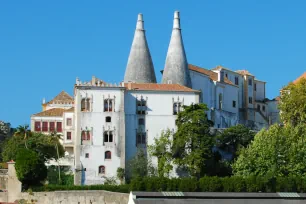
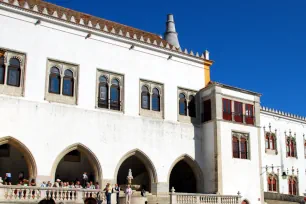
The Sintra National Palace – also known as the Paço Real or Royal Palace – is situated in the old town of Sintra, some forty kilometers from Lisbon.
The whole town is classified as a UNESCO World Heritage Site and is home to no less than five palaces and a castle. The royals preferred to stay here during summer, since the weather is several degrees cooler here than in Lisbon. Sintra can be reached from Lisbon by taking a regional train from the Rossio train station.
History
As early as in the tenth century, a residential palace was built here by the Moors, who at the time ruled over the region. In 1147, during the Christian reconquest, Dom Afonso Henriques captured Sintra from the Moors and occupied the palace, which was named Palácio de Oliva (Olive Palace).

Much of what we see today can be traced back to 1385, when king John I ordered the complete reconstruction of the palace. In the early sixteenth century, King Manuel I started a thorough renovation with funds acquired thanks to the riches that were brought to Lisbon by Portuguese explorers. At the same time, the palace was expanded in a combination of Manueline and Mudéjar styles.
The palace was in use by the royal family until 1880. In 1910, with the proclamation of the republic, the palace became a national monument.
The Palace
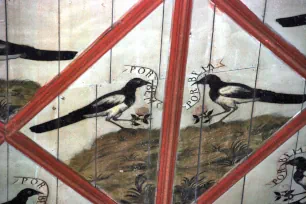
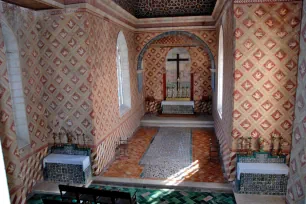
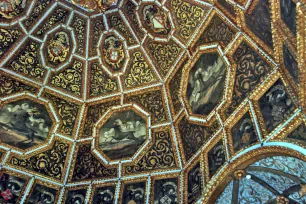
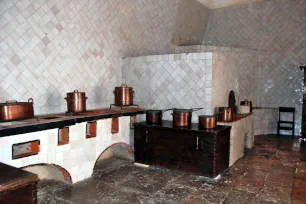
Surprisingly, the most eye-catching part of the National Palace in Sintra are the colossal chimneys, built in the fourteenth century to keep the kitchens smoke-free. The chimneys can be seen from kilometers away, and one can only imagine the kind of banquets held at the courts that required such massive chimneys.
Even more interesting are the magnificent azulejos – ceramic tiles – that decorate the many rooms of the royal palace. There are azulejos from the fourteenth to the eighteenth centuries, including some authentic Mudéjar Azulejos with Moorish geometric motifs.
The oldest rooms of the palace surround the central courtyard. These include the Sala dos Árabes (Arab room) – decorated with intricate motifs and azulejos; the Sala dos Cisnes (Swans room) – with a magnificent ceiling decorated with swans – and the Sala das Pegas (Magpies room), painted with 136 magpies, each one holding a rose and a scroll with the words ‘Por bem’ There are two different stories surrounding this last room.
According to one story, the room was decorated with magpies, since the king thought the women at the court chattered like magpies. Another story claims the king made advances to one of the ladies-in-waiting by giving her a rose behind the back of his wife, Queen Philippa. A magpie snatched the rose and the king, caught red-handed, excused himself with the words ‘Por bem’ (For the good) and commissioned a painting of a magpie for every lady-in-waiting. In other variants of the story, the king is caught kissing one of the ladies.
Another highlight in the palace is the lavishly decorated Sala dos Brasões (Coats-of-Arms Room). The room, which occupies the Torre da Meca, has a hexagonal roof decorated with paintings of deer and the coats of arms of seventy-two noble families. The walls of the sixteenth-century room are decorated with blue and white azulejos that were added in the eighteenth century.
Also of note is the small Gothic chapel with a Moorish styled ceiling. You can also visit the kitchen, from where the massive chimneys rise that make the palace so easy to spot from afar.

